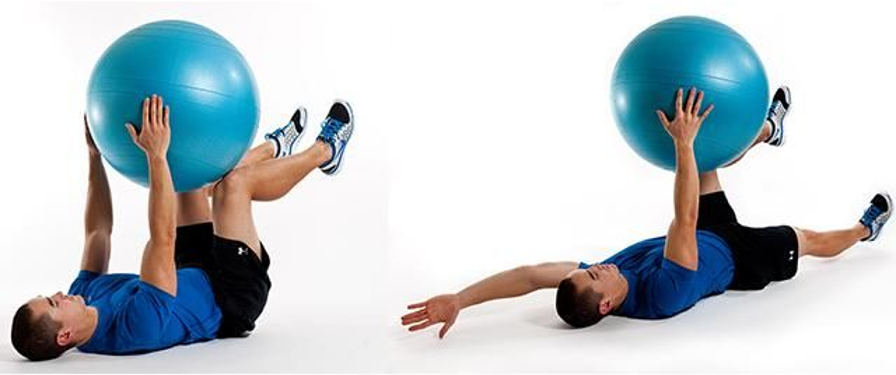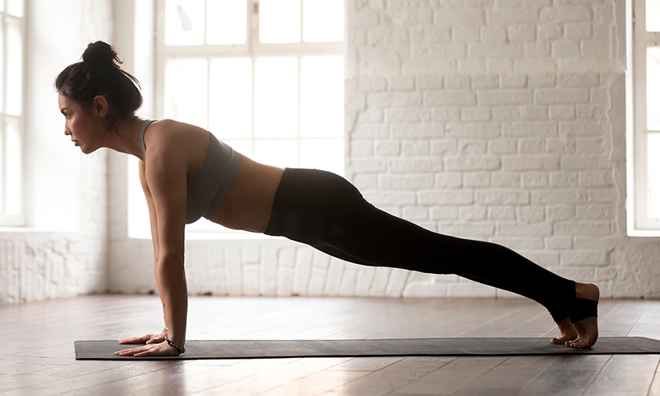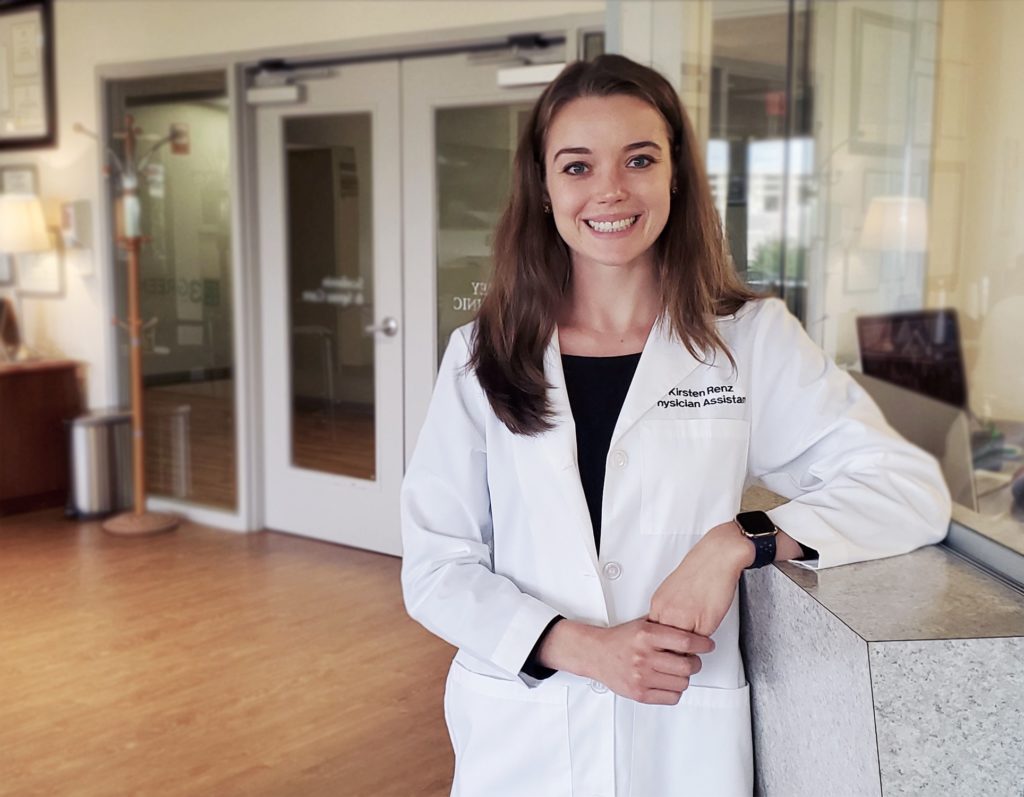Core Exercises: The Do’s and Don’ts from our Physician Assistant Kirsten Renz
One of the top orthopedic reasons for primary care visits and one of the most common referrals for physical therapy is derived from lower back pain. At the Hey Clinic, we see many patients, both children and adults, afflicted by low back pain. This pain can originate from a spinal deformity, such as scoliosis, kyphosis and spondylolisthesis or from other etiologies that can be seen by pathology on an MRI.
Whether you have a spinal deformity or not, two common questions we get from all patients are, “what exercises can I be doing to improve low back pain.” and “what exercises or movements should I be avoiding.” Although the answer to this question varies, generally it can be answered by determining if a patient will be treated conservatively or operatively.
Conservative ApproachPatients who have not had spinal surgery generally have no restrictions on what exercises they can perform. Typically, any cardio machine in general is safe on ones back. Whether you prefer the elliptical, spin bike, treadmill or stair master, these will all avoid excess strain on your back.
However, there are several exercises that are still likely to aggravate low back pain. These exercises are performed when lifting heavy weights and can generally be grouped into two categories: axially loading of the spine or momentum movements.
Examples of exercises that axially load the spine include: bar squats, heavy dead lifts or RDLs, and standing overhead press. In general, any exercise with a bar across your upper back puts extra load on your spine, even if your legs feel like they are doing the majority of the work in the movement. Another popular exercise where proper spinal alignment is difficult to maintain throughout the movement is heavy kettle bell swings. The momentum of the swing puts strain on your spine.
Post – Operative
Pediatric patients do not have any restrictions after surgery, although we recommend taking it easy for the first few weeks after surgery.
Young adults have fewer restrictions than adult patients, but we recommend no lifting bending or twisting for at least the first six weeks. Their bone density is typically better than our adult patients therefore the fusion mass tends to heal more quickly and restrictions do not need to be in place as long.
Adult patients are not supposed to lift, bend or twist. We recommend avoiding supine exercises or leg lifts in this population. Please see our “Return to exercise after surgery” handout for a detailed list of other exercises to avoid during the first post-operative year.
Scoliosis
For pediatric patients with scoliosis there are no restrictions on the activities in which they can participate. Although some patients may have soreness or pain following certain activities, this will not make their scoliosis worse. One exercise we do recommend patient’s with scoliosis avoid is back extension exercises or movement
For many patients with scoliosis, it is hard to tell if the back pain they are experiencing is from their curve or simply from poor core strength. Poor core strength can result in natural soreness which anyone may experience. For these cases, the core strengthening exercises below can be beneficial.
Exercises
Below is a list of core-strengthening exercises that can be beneficial for patients of all ages. These first two exercises are done while lying on ones back and therefore should be avoided in any adult patients who are less than one year out from a spinal fusion.
1. Deep core contraction: Start by lying on your back and squeeze your abdominal muscles in. This should cause your tail bone to slightly tuck under. These small contractions are a great way to warm up your abdominals. Contractions can be held for 10-15 seconds at a time and then released.
2. Dead bug squeeze: This exercise is done using a large yoga ball. The initial form of the pose is achieved by lying on your back with your arms and legs up and knees bent. The ball should be held firmly between your arms and knees. This should cause your abdominal muscle to contract. Contractions can be held for 10-15 seconds at a time. A more complicated expression of this pose is where the opposite arm and leg are extended. To reiterate these exercises should be avoided in adults less than one year post – op from a lumbar spinal fusion.

The next set of core exercises are generally safe for all patients, even those less than one year out from a spinal fusion. They all begin by facing your abdominals to the ground.

2. Push up plank: Begin this pose on your palms and knees with your pelvis forward and your spine in a neutral position. The full expression of the pose is performed with just palms and toes touching the ground. This movement can also be made dynamic by alternatively lifting each leg off the ground.

3. Knees bent plank: Begin this pose in the table top position with your hips and knees both bent at a ninety-degree angle. Your spine should be in a neutral position. The full expression of the pose is performed with just palms and toes touching the ground, while the knees remain at ninety degrees hoovering over the ground.

4. Bird dog: Begin this pose in the table top position with your hips and knees both bent at a ninety-degree angle and your spine in a neutral position. Opposite arms and legs should be extended while maintaining the neutral spinal position. Be careful not to extend the spine with the movement and focus on pulling your abdominals inward. Using a mirror can be helpful to ensure that you are maintaining proper alignment. The full expression of the pose is performed with just palms and toes touching the ground.
These exercises are great post-operatively because they require minimal motion of the spine but still engage the back muscles and deep core abdominals. All exercises should begin with knees down with the goal of slowly working towards the largest expression of the pose. I recommend holding each position in increments of 10-15 seconds and slowly build up the hold time.
Always remember when in doubt ask your health care provider about specific exercises that you should be avoiding. The above advice does not apply to all patients and should be taken at one’s own risk.
- Sources
- https://fitness4backpain.com/the-dos-and-donts-of-exercising-after-a-spinal-fusion/
- https://www.uptodate.com/contents/exercise-based-therapy-for-low-back-pain/print?search=exercises%20for%20back&source=search_result&selectedTitle=1~150&usage_type=default&display_rank=1
- https://www.ncbi.nlm.nih.gov/pmc/articles/PMC5648929/
- https://www.newyorkcityspine.com/blog/prevent-back-pain-with-a-strong-core/bird-dog-exercise/

